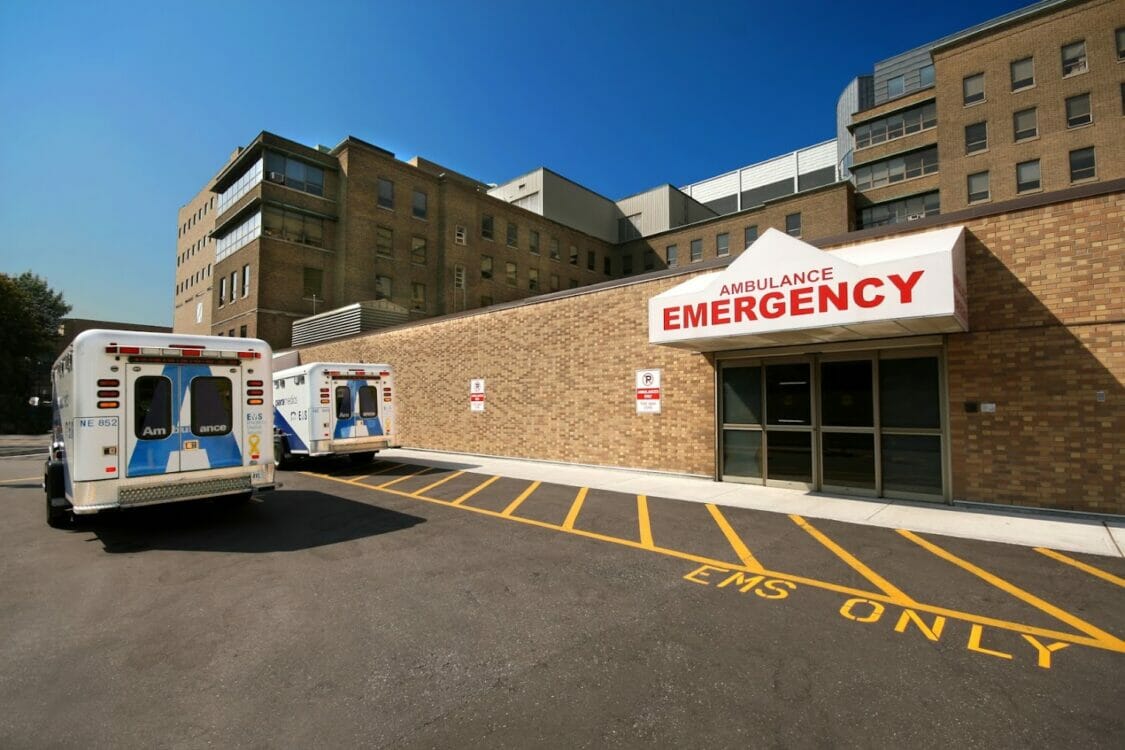Fires pose a serious threat to hospitals. These 4 tips can help hospitals safeguard lives, property, and equipment through preparation for a fire emergency.
How do Hospitals Prepare for a Fire Emergency?
In the case of hospitals, preparing for a fire emergency is a vital step towards safety on their premises. The potential threat of fire in a hospital necessitates thorough preparation, as an outbreak within a healthcare setting can swiftly escalate into a life-threatening and catastrophic situation. If you are responsible for managing a significant healthcare facility, the following guidelines can assist you and your team in conscientiously preparing for such scenarios. Use the following 4 safety tips to prepare for a fire emergency.
Steps Hospitals Use to Prepare for Fire Emergencies
1. Connect Fire Inspectors and Supervisors
The first step towards preparing for a fire emergency is connecting fire inspectors with hospital supervisors. By connecting these 2 key groups, there is a larger network of people to be aware of hospital circumstances, reduce hazards, and safeguard lives.
Fire inspectors serve a dual-purpose, holding personnel accountable for adherence to policies and regulations while also providing valuable learning opportunities for supervisors. Through inspections, inspectors and supervisors can gain insights into the efficiency of their teams’ fire preparation measures—identifying strengths and areas that require correction to ensure maximum safety.
In order to best connect inspectors and supervisors, we recommend investing in a fire inspection software. After all, the effectiveness of these 2 groups, fire inspectors and managers, hinges on accessibility to current, updated information. In a hospital setting, not everyone has the luxury of dedicated time to seek out inspection reports buried within a file cabinet. The solution lies in leveraging fire inspection software apps that significantly enhance the accessibility of inspection reports. With the convenience of apps, supervisors can effortlessly access these reports from their phones or tablets, ensuring availability wherever they are on the hospital floor. This streamlined access empowers supervisors to stay informed and proactive in maintaining a safe environment.
App integration also allows supervisors and teams to log the specific fire preparation items that they attend to as they complete the actions. This information, through mobile devices, becomes immediately available to inspectors who then can identify specific issues that need improvement.
Fire inspection apps such as InspectNTrack are available for both Android and iOS devices. Any app you chose should support both types of devices so everyone at a hospital can easily access the app via their preferred device.
2. Properly Secure Oxygen Tanks
Another way to prepare for a fire emergency at a hospital is to ensure the security of oxygen tanks, since these can potentially become very harmful and destructive in the event of a fire.
Oxygen tanks are integral components across various hospital departments, yet each tank within a hospital carries inherent risks. In the unfortunate event of a fire, the potential for an oxygen tank to explode poses a threat to everyone in its vicinity. Even if an explosion is averted, the simple act of a tank being knocked over during a chaotic moment can turn it into a hazardous projectile.
Recognizing the indispensable nature of oxygen tanks in patient care, it’s essential to acknowledge that the risks they pose cannot be entirely eliminated. However, implementing stringent measures to properly secure oxygen tanks in all scenarios can significantly diminish the likelihood of accidents and may also help mitigate the risk of explosions.
To address this concern comprehensively, a hospital-wide policy ensuring the proper securing of oxygen tanks should be firmly established. Staff members should undergo thorough training to adeptly secure tanks both in storage and during their use in patient rooms. This proactive approach not only prioritizes safety but also instills a culture of responsibility and awareness throughout the hospital.
3. Conduct Regular Fire Inspections
Routine inspections are one of the simplest and most effective ways to eliminate the potential for a fire emergency. They ensure that in the event of a fire, proper equipment is available for use.
Perform detailed fire inspections on an annual basis. These annual assessments serve as a vital tool for evaluating the adherence of personnel to hospital policies while providing constructive feedback.
Additionally, these inspections extend to the examination of critical equipment such as fire extinguishers, fire alarms, and fire sprinklers. It is imperative to include the testing of fire door alarms to ensure their functionality, alerting everyone effectively if one of the doors needs to be utilized. This intentional approach plays a pivotal role in maintaining a high standard of fire safety for hospitals to prepare for a fire emergency.
4. Make Fire Evacuation Plans Known
Every hospital needs an emergency evacuation plan, and that plan should be specifically for fires. Most buildings have a plan after the building is initially constructed. Revise the plan in the event of a building remodel or other significant change to the building layout.
Then, train everyone on the new hospital evacuation plan so they know what to do in the event of a fire. Supervisors should review these plans regularly, and all staff should have periodic training on the evacuation plans.
While patients and their families may not participate in formal fire evacuation training, it is essential to communicate the plan to them. Prominently post maps of the surrounding area and paths to exits in all rooms and hallways to provide everyone, including patients and their families, with vital information on evacuation procedures. This strategy contributes significantly to the overall safety and preparedness of the hospital environment.
If you run a hospital and need help managing fire inspections, contact Inspect & Track to learn how our software can streamline the inspection scheduling, conducting, and reporting process. We look forward to helping you!
Conclusion
Hospitals play an essential role in society in saving lives. However, just like all other institutions, they are subject the risk of a fire emergency. In order to best prepare for a fire emergency, hospitals should connect with fire inspectors, perform routine fire inspections, ensure all equipment (including oxygen tanks) are secured, and inform staff and others of fire evacuation plans. Those these strategies may seem insignificant, they can profoundly contribute to a safe hospital environment, particularly in the case of a fire emergency.
Other Helpful Articles
Table of Contents


